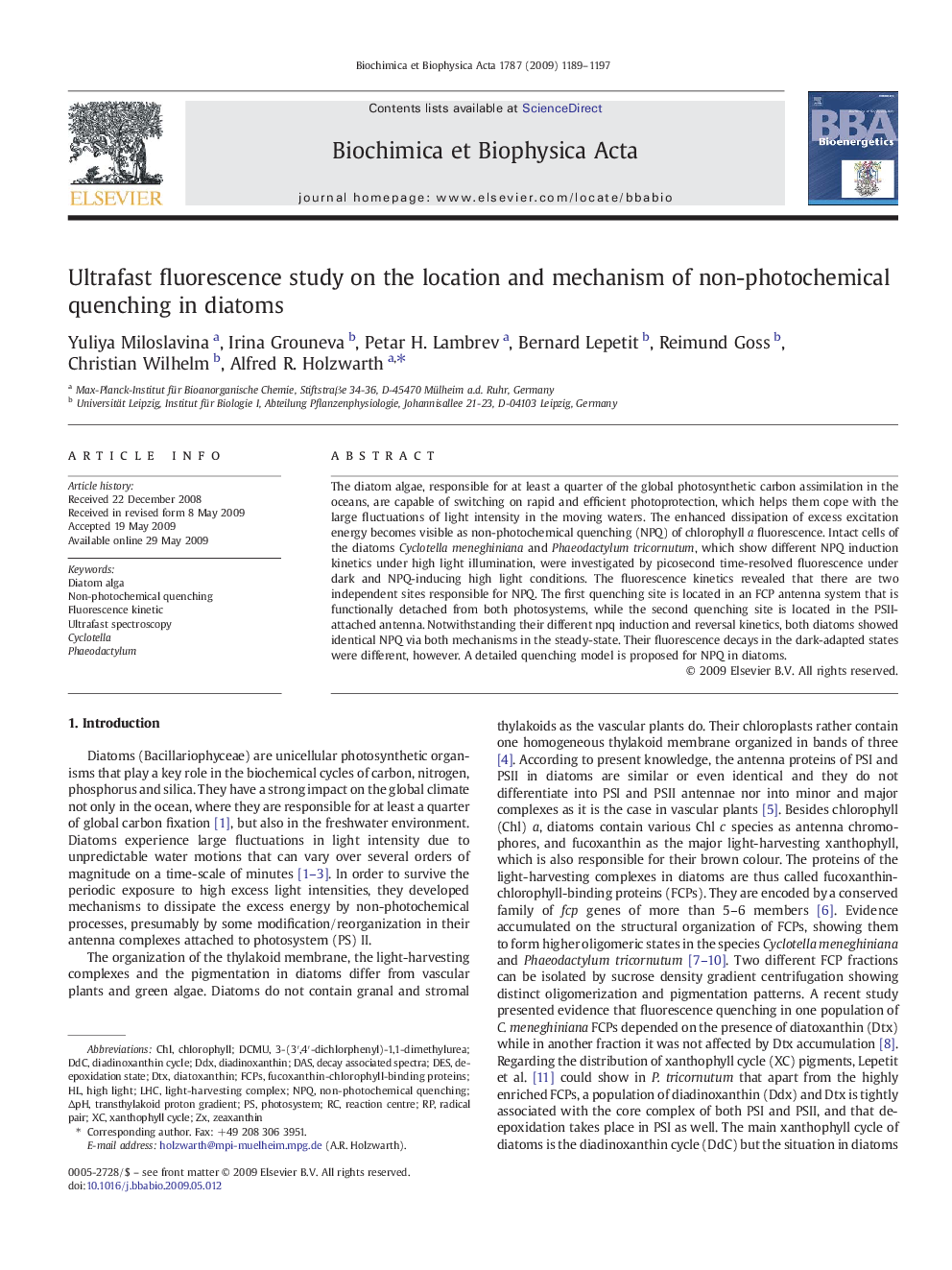| Article ID | Journal | Published Year | Pages | File Type |
|---|---|---|---|---|
| 1943062 | Biochimica et Biophysica Acta (BBA) - Bioenergetics | 2009 | 9 Pages |
The diatom algae, responsible for at least a quarter of the global photosynthetic carbon assimilation in the oceans, are capable of switching on rapid and efficient photoprotection, which helps them cope with the large fluctuations of light intensity in the moving waters. The enhanced dissipation of excess excitation energy becomes visible as non-photochemical quenching (NPQ) of chlorophyll a fluorescence. Intact cells of the diatoms Cyclotella meneghiniana and Phaeodactylum tricornutum, which show different NPQ induction kinetics under high light illumination, were investigated by picosecond time-resolved fluorescence under dark and NPQ-inducing high light conditions. The fluorescence kinetics revealed that there are two independent sites responsible for NPQ. The first quenching site is located in an FCP antenna system that is functionally detached from both photosystems, while the second quenching site is located in the PSII-attached antenna. Notwithstanding their different npq induction and reversal kinetics, both diatoms showed identical NPQ via both mechanisms in the steady-state. Their fluorescence decays in the dark-adapted states were different, however. A detailed quenching model is proposed for NPQ in diatoms.
